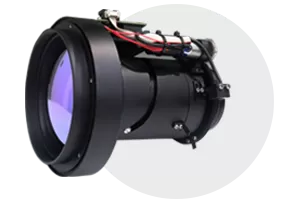What is the difference between an infrared lens and a visible light lens?
Infrared lenses have low power supply and use two types of infrared rays: near-infrared or short-wave infrared, with a wavelength of 0.76-1.5 microns, which penetrates deeply into human tissue, about 5-10 mm; far-infrared or long-wave infrared, with a wavelength of 1.5-400 Microns are mostly absorbed by the superficial skin, and the depth of penetration of the tissue is less than 2 mm. Enhanced nighttime image capture. Therefore, most users need infrared cameras to pursue strong camera effects.
The basic principle of infrared lens:
Ordinary film cameras can also take infrared photography, but they must be equipped with special infrared sensitive film and infrared lenses. The CCD/CMOS sensor used in the infrared lens can sense infrared rays. In order to ensure normal shooting without color shift due to infrared interference, camera manufacturers are equipped with ICF in front of the CCD to block infrared rays and pass visible light; the opposite of ICF, infrared The role of the lens is to block visible light and allow infrared light to pass through. The camera with night shooting function is to remove the ICF through a mechanical device so that the CCD can fully receive infrared rays!
The difference between infrared lens and visible light lens:
1. Different uses:
In a monitoring environment that does not require infrared light supplements, an ordinary lens can be used; in a monitoring environment with infrared light supplementary light, an infrared lens must be used to achieve a better imaging effect; of course, an ordinary lens is used for infrared supplementary light You can also see the picture below, but the picture will become blurry. I believe everyone has a deep understanding of this.
2. Different prices:
The price of a professional infrared lens is several times that of an ordinary lens. Since the imaging of the infrared lens is relatively clear at night and in the morning, the effect is good and it is naturally expensive.
3. Different functions:
At present, ordinary lenses on the market can focus light with a wavelength difference of about 250nm into the same three-dimensional, that is, light in the range of 430~650nm or 650~900nm can be successfully focused to present a clear image, which is why ordinary lenses are daylight. Clear and clear, the night vision is blurred, perhaps the night vision is clear, the reason for the blurred day.
The professional-sensing infrared lens adopts special lenses, which can gather the light in the 430~900nm or even longer wavelength range into the same stereo, so the imaging in the daytime and the night vision are clear. Due to the special lens material, the cost is naturally high.



评论
发表评论